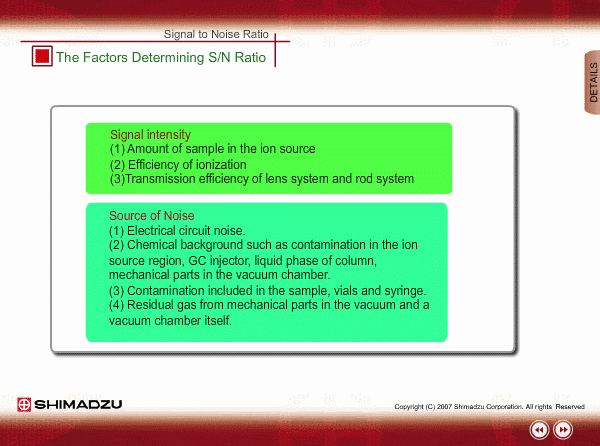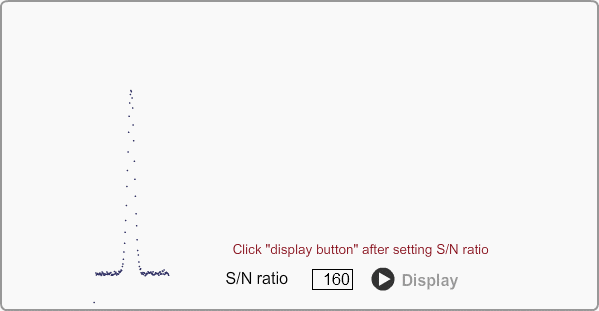Signal-to-Noise Ratio
Definition of S/N Ratio
The signal-to-noise (S/N) ratio is often used as a yard-stick to measure the sensitivity of a GC/MS instrument. The S/N ratio will be described here. Note that practical detection limit is very difficult to estimate in general, because the limit depends on many factors: compounds, matrices of the samples, and so on.

The Factors Determining S/N Ratio
Sensitivity is affected by many factors. Some important factors related to hardware and analysis are listed here. It is important to increase signal intensity and decrease noise for high sensitivity analysis.
Some data treatments, such as over-smoothing and a mass chromatogram with an unrealistic narrow mass window, could also improve the S/N ratio, but these are meaningless for practical analysis.

Simulation of S/N Ratio
Saintly starts and spin control avoid risk
The commercially available GC/MS instrument uses the standard deviation of baseline fluctuation as noise. This simulation is performed by assuming that the baseline fluctuation statistically has a normal distribution. You can confirm it is reasonable based on S/N=3 being generally the detection limit.







